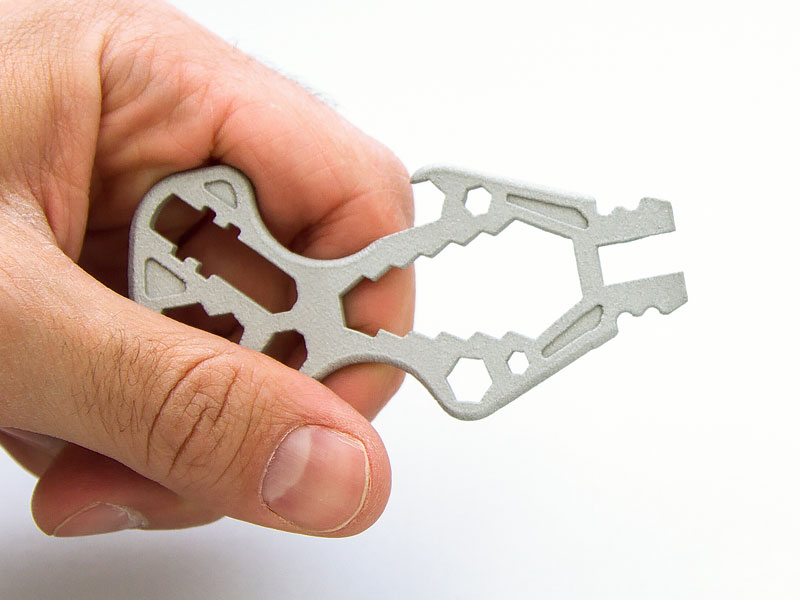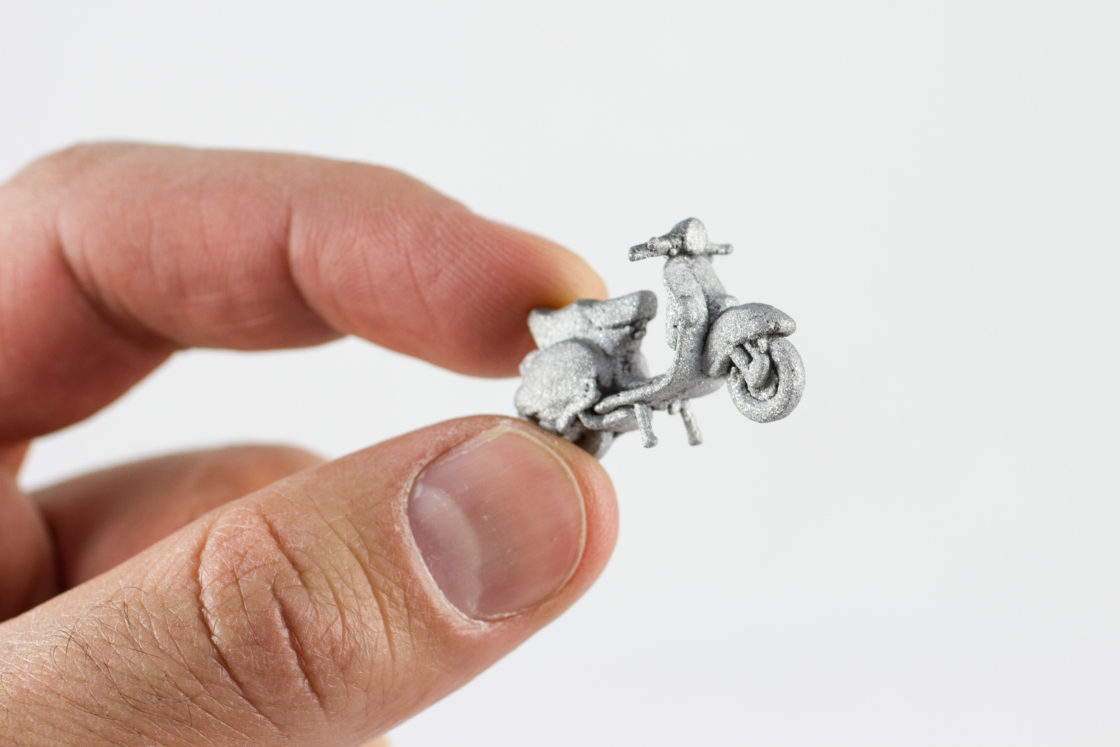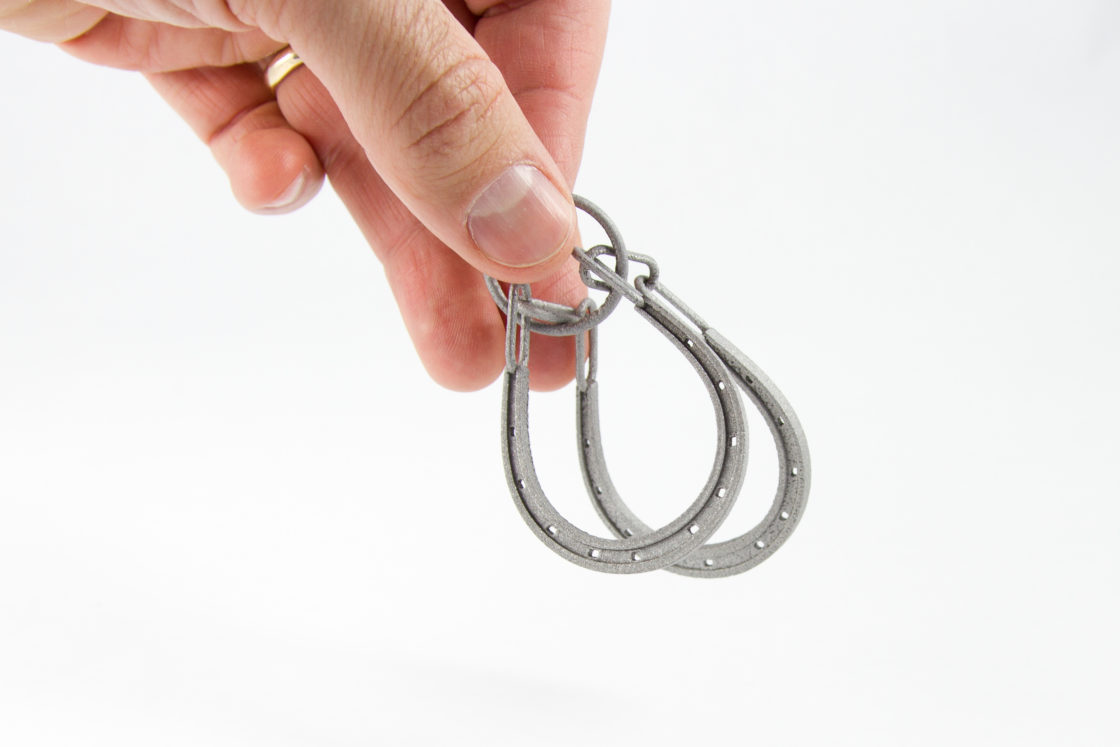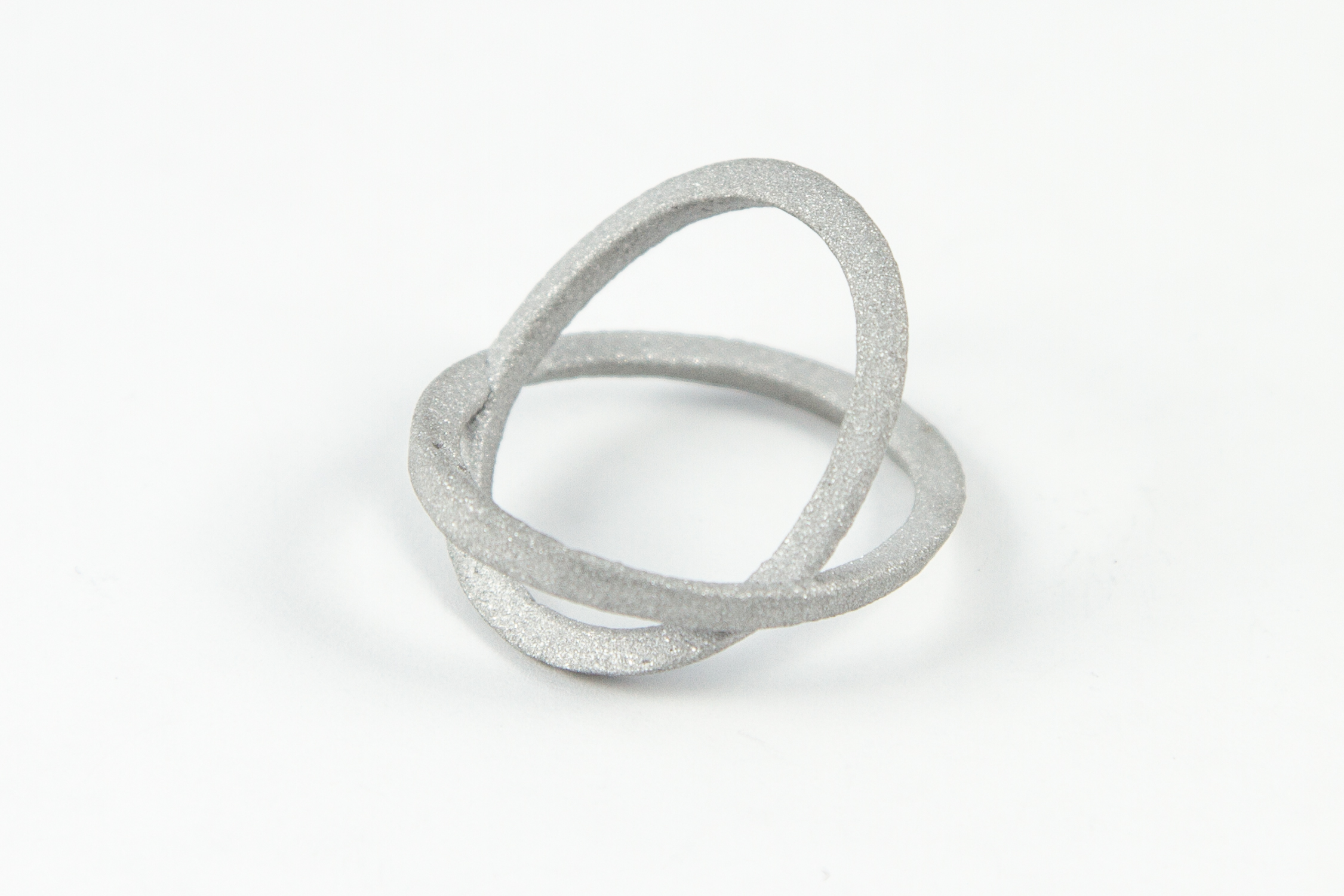
Aluminum is an extremely viable metal for manufacturing, used and recycled around the world for the fabrication of millions of structures and parts, spanning everything from power lines to electronics. This material is also highly favored for metal 3D printing due to its high strength, and its low weight; in fact, aluminum can reduce the weight of parts dramatically when compared to traditionally made products.
3D printing enthusiasts are usually eager to find out what Shapeways is offering in the materials lineup, and especially for 3D printing with metal. The demand for manufacturing with materials like aluminum continues at a rapid pace too, as other companies work harder to offer new services to their own customers. Working smarter–and manufacturing smarter–often intuitively means outsourcing metal additive manufacturing to the experts at Shapeways.
AlSi10Mg Provides Unique Features for 3D Printing
Shapeways offers AlSi10Mg for 3D printing with selective laser melting (SLM). A blend of aluminum, silicon, and magnesium, AlSi10Mg is used to make strong, highly functional parts and prototypes which help speed product development and enhance performance.
While this metal may lack the superior strength of steel or titanium, aluminum is popular for parts requiring resistance to corrosion, as well as thinner walls within the geometry–something that can be a challenge to find in additive manufacturing. AlSi10Mg offers resistance to temperature as well as high pressure, and is suitable for products requiring high strength and accuracy.
There are also small amounts of iron included in this aluminum alloy, but it is the silicon levels which strengthen AlSi10Mg beyond use of the pure metal itself. Corrosion resistance occurs because of the oxide layer which forms on the surface of the material naturally. AlSi10Mg is also skin-friendly and heatproof to 570c/1058f.
Other material properties include:
- Good strength to mass ratio.
- Low density, which allows for the production of very strong, but lightweight parts.
- High thermal conductivity, useful for 3D printing parts like heat exchangers for many engineering applications.
- Very high electrical conductivity, useful for parts like electric wires used in power applications.
Shapeways offers this metal in a standard finish only.
How Selective Laser Melting Works
At Shapeways, SLM technology makes it possible to 3D print strong metal parts rapidly, and without tooling. Aluminum alloys like AlSi10Mg allow for the stiffness, accuracy, and high thermal conductivity required for functional parts and tools.
Selective laser melting (SLM) is known for its origins in the mid-90s, created along with other methods of powder-bed fusion at the Fraunhofer Institute ILT in Germany during a major research project. SLM is a subcategory of laser powder-bed fusion technology, which also encompasses 3D printing with thermoplastics; here, however, metal 3D printing with SLM uses a laser to completely melt each layer above the melting point rather than just taking it to the minimal point where particles are fused. And while heat may be distributed more evenly in comparable technologies like electron beam melting (EBM) where high temperatures are used in a vacuum atmosphere, surfaces are generally rougher and accuracy is decreased.
Laser bed fusion technology is somewhat akin to that of welding, as metal particles are melted and fused together–and in fact, this method is often referred to as ‘laser welding.’
“Metal – Laser Powder Bed Fusion is a mature technology, that has been used in many end-use applications within Aerospace to Medical industries” said Thomas Murphy, Senior Product Manager, Physical Products at Shapeways, in explaining why so many OEM’s still rely on that method for metal 3D printing today.
SLM offers a host of great benefits, to include:
- The ability to work with a variety of 3D printing metals, including aluminum, that offer high density.
- A highly efficient process that uses less energy and less material resources in comparison to traditional manufacturing.
- Quality production of highly complex products with intricate designs.
- Heavy customization to maximize performance in functional parts for critical applications.
It all begins with a digital file as CAD data is translated into a 3D design which is sliced and readied for 3D printing. In the case of aluminum, metal powder particles are dispersed over the build platform and then sintered as a laser provides heat, thus melting the layers together until the final structure is complete.

Supports Are Required in SLM 3D Printing
Supports are key to protecting parts with intricate features and overhangs from deformation that can occur as a result of internal or residual stress during 3D printing. Depending on how complex the geometry is, there could be a lot of supports used to protect a part from cracking or warping during production. This is especially true for larger metal parts, which may require a much more sophisticated support system too.
“When you sinter that metal powder it actually becomes more dense,” said Murphy. “That material would fall down and you would not be able to sinter the next layer onto it without supports securing the part onto the build plate.”
After parts have been completely cooled, supports are removed in post-processing with compressed air.
Aluminum is Used in Critical Applications
The ability to 3D print with newer resources like metal means greater opportunity for innovation and manufacturing, as well as more opportunity to expand in a wide range of applications. This also means that designers and engineers are able to go forward with products that would have been impossible to manufacture using conventional methods–looking toward aluminum and the opportunity to print a very solid structure that can also be very flexible and offer great features like thermal properties too.
SLM 3D printing with the fine metallic powder derived from AlSi10Mg is extremely valuable for applications like:
- Functional automotive and railway parts and prototypes
- Aerospace parts
- Drone technology
- Bicycle parts
- Tools and fixtures
- Structural components
Innovative or redesigned components can be 3D printed in metal for applications like aerospace, improving turbines with new parts installed in larger assemblies for improved performance–harkening back to one of the greatest advantages in 3D printing overall: the power to make parts that would not have been possible previously.
3D printing with metal and other materials like aluminum is also paving the way for companies involved in automotive and railways to rebuild and make obsolete parts, and to keep spare-part inventories as needed; for example, an older vehicle or a train that is being restored, fixed, or just maintained may need a part replaced that is impossible to find because no one sells them anymore. With a quick 3D scan, that part can be replicated in 3D print. It is even possible to make additional improvements and customizations, along with numerous iterations to ensure the perfect fit.
Spare parts can also be kept for an on-demand basis, offering the potential to revolutionize how parts are kept and warehoused. Rather than collecting dust on shelves and eventually becoming obsolete themselves, parts can be stored on digital files and 3D printed as needed.

Metal 3D Printing Continues to Accelerate
Understanding the technology is key, especially when it comes to 3D printing with metal. As accelerated market opportunities abound, many different types of materials, hardware, and technologies are becoming available. In metal 3D printing along with SLM, this also includes a variety of other technologies like electron beam melting (EBM), fused deposition modeling (FDM), material jetting, and binder jetting. Shapeways does also offer 3D printing with other metal materials via binder jetting, as well as metal casting for applications like fine jewelry too.
Placing metal 3D printing in the spotlight, Grand View Research shows that the 3D printing metal market size is expected to reach USD 2.36 billion by 2028, expanding at a CAGR of 25.7% over the forecast period.
“Market growth is attributable to the cost-effectiveness of 3D printed parts, reduced lead times, and the development of complex parts during production,” they state.
And while speed and savings on the bottom line are factored in as some of the most motivating benefits, high costs associated with 3D printing setup still cannot be overlooked for businesses hoping to save precious capital:
“Until very recently, the complexity and high cost of metal 3D printers limited the usage of additive manufacturing to high-volume and low-value parts. SLM and DSLM printer prices start at USD 400,000 and can go beyond USD 1,000,000 and they also require carefully controlled environments and highly skilled workers,” states further data by Grand View Research.
While metal 3D printers–and other printers also–can be extremely expensive, that is part of the beauty in working with Shapeways. Other manufacturers can outsource their 3D printing needs without having to invest in hundreds of thousands of dollars or more in hardware.

Explore Other Material Options
With over 90 materials and different finishes available, high-quality 3D printing materials are a tremendous source of pride at Shapeways. Great care is taken in choosing all resources, as well as reaching out to new manufacturing partners and suppliers. Each material offering is unique, bearing its own technical specifications too.
To get the perfect look and feel for any 3D printed part, check out the material options that Shapeways offers. Each material listed notes the available finishing options to ensure that your aesthetic parts look good, and your functional parts perform how you need them to in the end.
Upload your design and get an instant quote now!
About Shapeways
Enjoy the benefits of this advanced technology and a wide range of materials from Shapeways for 3D printing your creations with accuracy, complex detail, and no minimum or limits in terms of mass customization or single part orders. Shapeways has worked with over 1 million customers in 160 countries to 3D print over 21 million parts! Read about case studies, find out more about Shapeways solutions, and get instant quotes here.

